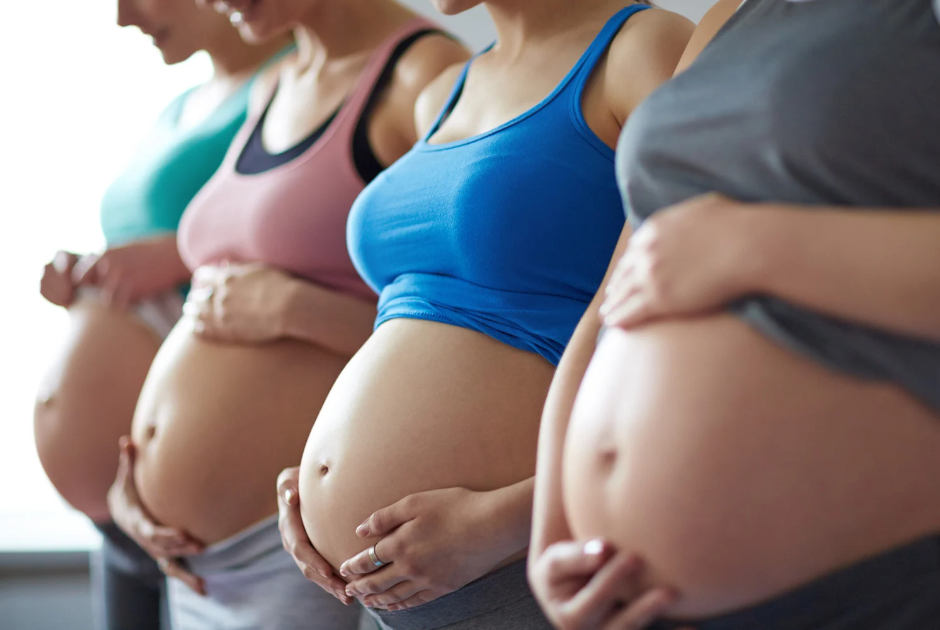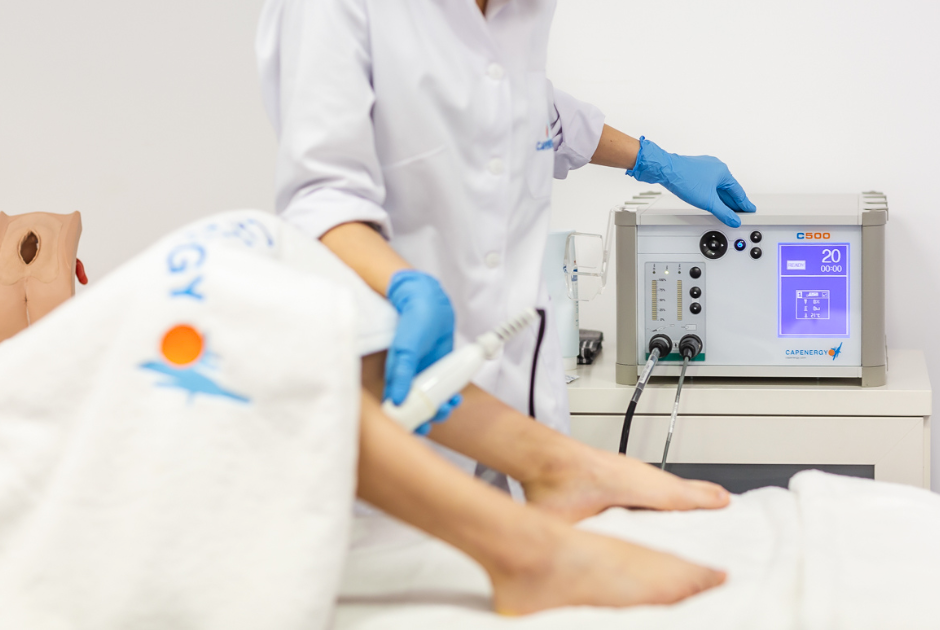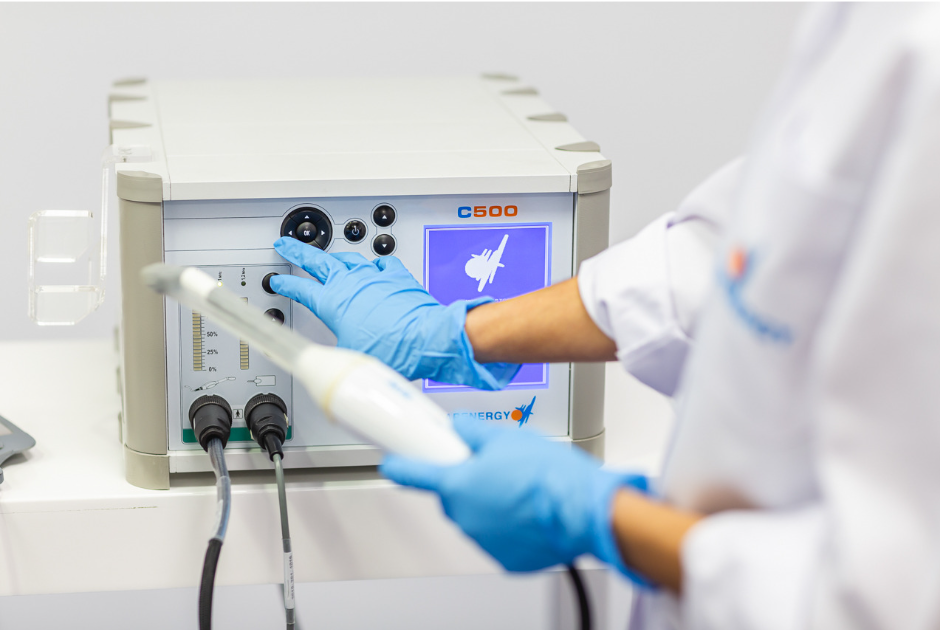
Did you know that 100%o of the population has hemorrhoids but only 50% suffers from haemorrhoidal pathologies?
A haemorrhoidal pathology tends to be suffered in silence. It’s a disorder that causes the dilation and inflammation of the veins of the lower part of the rectum and around the anus, giving way to uncomfortable and painful symptoms.
The good news is that Capenergy’s second generation tecar therapy can help patients that suffer from hemorrhoids. It’s an unknown and innovative alternative to treat this type of pathologies in a biological and non-surgical way.
But let’s start at the beginning…
What are hemorrhoids?
Hemorrhoids are normal vascular structures that are present from the embryonic stage on, forming three main vascular cushions located in the right anterior and posterior quadrant and in the left lateral quadrant. The connective tissues fix these vascular cushions to the muscle wall.
They have basically two functions:
- Contributing to the anal canal closure
- Distinguish between the different sensations that can occur within the lower rectum, for instance, knowing whether what’s inside the anus or rectum is solid, liquid or gaseous.
Haemorrhoidal disease, on the other hand, is the whole of symptoms and signs that can be attributed to the alteration of the haemorrhoidal tissue or its supporting tissues, mainly in the shape of dilation of prolapse of the vascular structures that cushion the anal canal.
The presence of hemorrhoids is similar among both sexes and increases with age. Women suffer more often from hemorrhoids during pregnancy and delivery.
What kinds of hemorrhoids are there?
Hemorrhoids can be classified in two types: external and internal.

External hemorrhoids
External hemorrhoids are located below the pectinate or dentate line. This line marks the separation between the skin area below and the true mucous of the anal canal above. They can be felt from the outside.
This type of haemorrhoid can form blood clots that can thrombose due to the hypertonus of the anal sphincter. This blood clot is reabsorbed or expelled through ulceration. When a clot is formed, painful purple swelling appears.
External hemorrhoids can furthermore cause minor bleeding when passing excrements or expelling the blood clot.
When a blood clot has been processed, be it through absorption or expulsion, a skin flap will remain (anal plicoma) which is a swollen fold of anal or perianal skin. They can cause itching or perianal burning and difficulty when wiping down.
Internal hemorrhoids
Internal hemorrhoids are located above the pectinate or dentate line. They tend to be painless unless they start protruding.
Furthermore, they can be strangled and become necrotic when reaching grade 4. In this stage, they will become very painful.
Internal hemorrhoids frequently bleed during defecation due to the stress the suffer when passing fecal matter. This is why hemorrhoids are detected by bright red blood trails in the toilet bowl or smudges on the toilet paper.
This type of haemorrhoid generates a feeling of incomplete evacuation and causes the anal mucus to secrete mucus. They can also cause skin irritation and anal itching as well as a burning feeling, especially during defecation. They can only be felt when protruding.
According to the degree of protrusión, 4 groups of internal hemorrhoids can be distinguished:
- Grade I. Protrusion in the anal channel without exterior prolapse.
- Grade II. Prolapse with spontaneous resolution.
- Grade III. Prolapse with manual reduction.
4. Grade IV. Continuous prolapse that reproduces after reduction.

What does haemorrhoidal disease entail?
Very often, certain efforts provoke venous congestion due to the blocking of the venous return, which then generates an increase of the venous pressure, provoking external and internal hemorrhoids.
The space available for the feces and the mucus to pass through is reduced due to the effort and the enzymes and mediators also contribute to the deterioration of the supporting tissue of the anal cushions. These vascular cushions are attached to the muscular wall and the deterioration of the connective tissue that attaches the plexus to the muscle wall is the main cause of the prolapse.
Ultimately, any element causing the alteration of the connective tissue and loss of fixation of the cushions is a causative agent of the prolapse of internal hemorrhoids.
The etiology of the haemorrhoidal pathology can be multifactorial:
- Hereditary factors
- Standing up for long periods of time
- Intense physical efforts
- Sedentary life or work
- Constipation in patients with a diet poor in fibers and water, meaning defecation requires effort as a consequence.
- Sitting on the toilet for long periods of time.
- Chronic diarrhea
- Pregnancy (due to the increase of abdominal pressure)
- Loss of the sphincter muscle tone
- Overweight
- Excessive use of laxatives
External and internal hemorrhoids are both very frequent during pregnancy. The gravid uterine weight produces pelvic congestion that compresses the pelvic blood vessels, inducing the appearance of external and congestive hemorrhoids.
After giving birth, when the compression has gone, the hemorrhoids may or may not disappear.

Other factors that can provoke or aggravate hemorrhoids during pregnancy, apart from pelvic compression, are:
- Constipation: Especially when entering the third trimester.
- Increase of progesterone: This increase is produced from the first trimester on. It causes the dilation of the blood vessels and the small veins surrounding the anus, giving way to hemorrhoids.
- Strain during childbirth: During childbirth new hemorrhoids can appear because of the strain exercised by the mother or those that appeared during pregnancy can aggravate.
Tecar therapy treatments are contraindicated during pregnancy, but during the postpartum period we can start treatment with Capenergy’s tecar therapy without any problem.
How to treat haemorrhoids with 2nd generation tecar therapy
Hemorrhoids are a common and painful condition that affects many people across the world. Thanks to Capenergy’s technology, you will be able to help patients suffering from hemorrhoids.
Before starting treatment with Capenergy, a coloproctology specialist needs to diagnose the patient with the type and grade of hemorrhoids he’s suffering from, apart from ruling out other digestive pathologies.
Once we’ve got a medical diagnosis, we can determine and sort the goals we want to achieve with our tecar therapy treatment .
- 1st PHASE – Acute: On the one hand, our treatment will be aimed at reducing the strangling of the haemorrhoid, according to the grade of the latter, in order to reduce the blood stasis, the inflammation and therefore also the pain levels. We can also locally treat the haemorrhoid itself. On the other hand, we can start working the intra-abdominal pressure and body posture, apart from offering our patient a list of hygienic and dietetic indications.
- 2nd PHASE – Sub-acute: we continue working the hyper-tone of the anal sphincter and the levalator ani to avoid collapse and thrombus. Once the venous stasis has decreased, we can start treating the haemorrhoid both internally and externally at slightly higher temperatures in order to start the regeneration of the mucous and the connective tissue.
- 3rd PHASE – Reconstruction: Little by Little we generate neo-collagenesis of the connective tissue working at higher temperatures and a more efficient tissue regeneration..

According to the type of patient, the type of haemorrhoid and the grade of the latter, the treatment protocol will vary.
Treatment of internal hemorrhoids
Internal prolapsed grade 4 hemorrhoids will generally require surgical intervention. For external hemorrhoids, the patient generally receives pharmacological treatment that only soothes the pain but does not solve the underlying physical issue. CAPENERGY’s technology, however, can successfully do this as it reconditions the patient’s anatomy.
On the other hand, an internal prolapsed and strangulated haemorrhoid cannot receive intracavitary treatment from the start. During the 1st phase, we can only treat it externally to relax the external anal sphincter and the part of the haemorrhoid that has protruded. Once it can be manually reduced and pushed back inside, during the 2nd phase, we can start working the external and internal sphincter and the rectal conduct from the inside.
Treatment of external hemorrhoids
The guiding principle for the treatment of external hemorrhoids is to work it on the outside and also on the inside with the help of the intracavitary MJS probe in the area of external anal sphincter first and then gradually proceeding towards an internal approach.
A priori we are not interested in vascularization since there is a lot of blood accumulation in the area. It is not an ischemic pathology, but rather an issue of difficulty in the venous return and excessive pressure on the body. What we want to do is drain with the active plates at the end of each session to stimulate vascularization and the mobilization of that venous return.
C500 Urogyne – 2nd generation radiofrequency device
For the intracavitary treatment of hemorrhoids, the use of Capenergy’s intracavitary MJS probe will be necessary. This probe comes exclusively with C500 UROGYNE, and offers the required safety and control mechanism for an efficient and safe treatment. Other advantages it offers are:
- The temperature sensor of the intracavitary MJS probe will allow us to set a specific therapeutic temperature goal according to the phase the pathology is going through. In the acute phase, the temperature should not exceed 35ºC. In the subacute phase, we can work at 36-37ºC while during the reconstructive phase, temperatures of 38-39º can be achieved.
- The ergonomic design of the MJS probe enables us to simulate manual rectal exploration and working the muscles by means of a massage or to perform a trigger point treatment.
- The MJS probe is designed and indicated to treat the pelvic area, which has very vascularized and high-water-content tissues.
- The patient is handed a safety button, which he can push to immediately pause the treatment should he or she experience any discomfort. This gives the patient additional ease of mind and relaxation, essential for a safe and efficient intracavitary treatment.
All these features enable the performance of both intracavitary and extracavitary treatments. The professional will at all times be able to control the device parameters on the device screen, so a device-patient-therapist feedback is generated.

All Capenergy’s 2nd generation tecar therapy devices are furthermore of great help in the treatment of intra-abdominal pressure issues and body posture correction. This part of the treatment, which is just as important as the local treatment of the haemorrhoidal pathology, consists in reducing the tension of the diaphragm to stimulate the abdominal and pelvic venous return and improve the tropism of abdominal and paravertebral muscles to assure a major activation and toning of the CORE.
It is important to also bear in mind that with the active plates, characteristic of the second generation devices, we can perform electromagnetic lymphatic drainages at the end of each session and thusly stimulate the venous and lymphatic return of the lower members and the abdominal and pelvic cavities.
To end with, here are some hygienic and dietetic indications that will help those patients suffering from constipation and / or hemorrhoids:
- Avoid constipation: follow a diet rich in fibers including fruits and vegetables.
- Drink water and liquids in the shape of soups.
- Avoid straining during defecation.
- Take some kind of fiber to help reduce constipation. Do not forget to consult with a sanitary professional beforehand.
- Exercise regularly and do not remain seated for long periods of time.
- Ingest foods such as grapes, blackberries or prunes: they contain flavonoids that protect the blood vessels.
- Reduce the intake of alcohol as it has a vasodilator effect that worsens the symptoms.
- Avoid spicy food or food that can irritate the digestive tract.
- Take lukewarm baths for 10 to 15 minutes per day. Ice bags can be applied to reduce the vasodilatation of the area.
- After defecation, wipe the area gently without applying pressure.
Capenergy C500 is definitely an therapeutic alternative completely unknown to patients suffering from hemorrhoids and that are looking for a way to reduce pain, itching and burning with the help of anesthetic creams and suppositories that only mitigate the physical discomfort (the symptoms) but do not treat the underlying cause.
To treat the cause of hemorrhoids, a localized biological treatment is required that stimulates vascularization and venous return. Thanks to its active plates with temperature sensor and its intracavitary mechanic support, Capenergy’s technology completes this process internally and externally, according to the type of hemorrhoids. Capenergy’s technology.
Would you like to know more about Capenergy’s tecar therapy and how to treat different pathologies? Request your free demo.